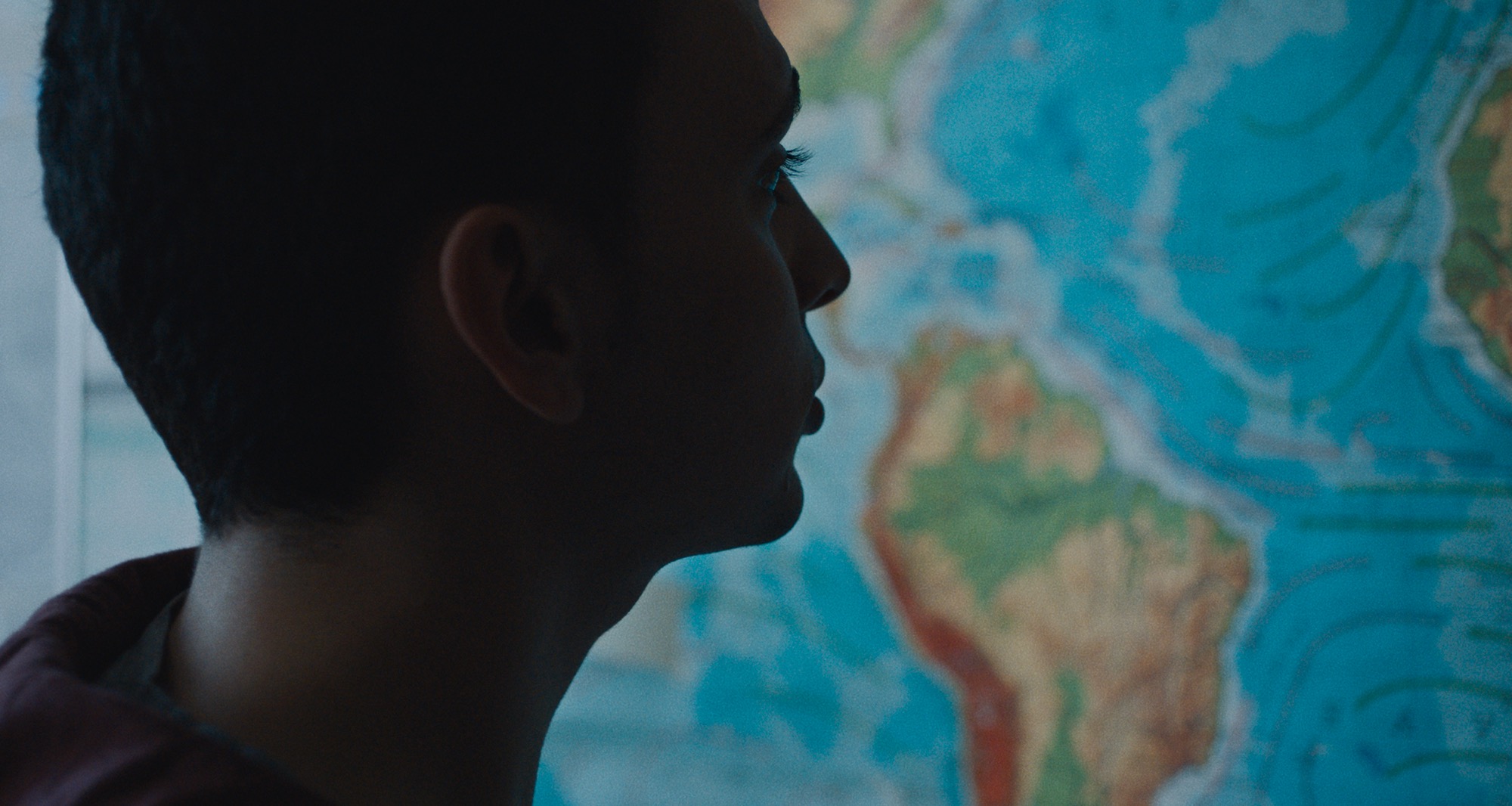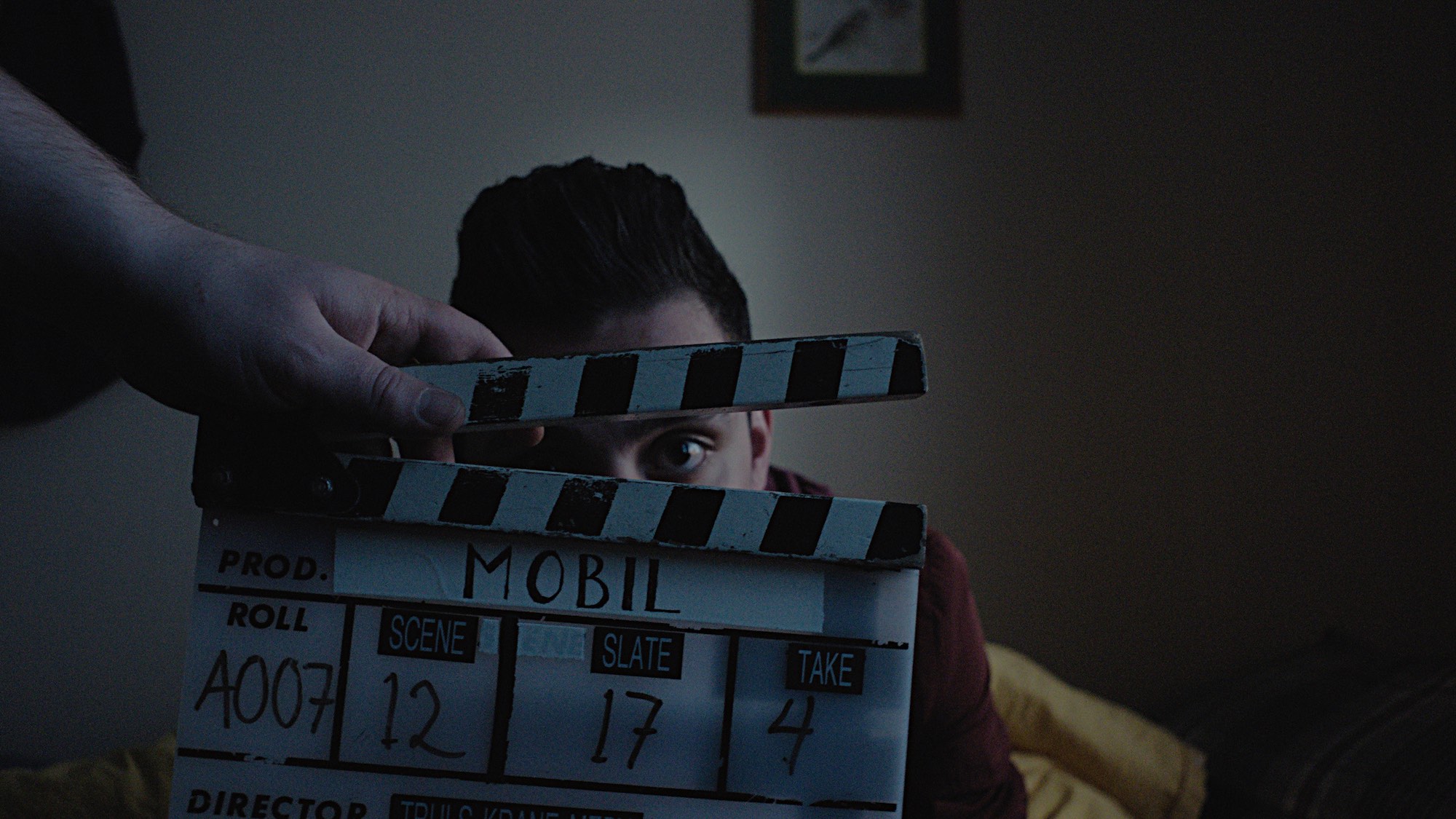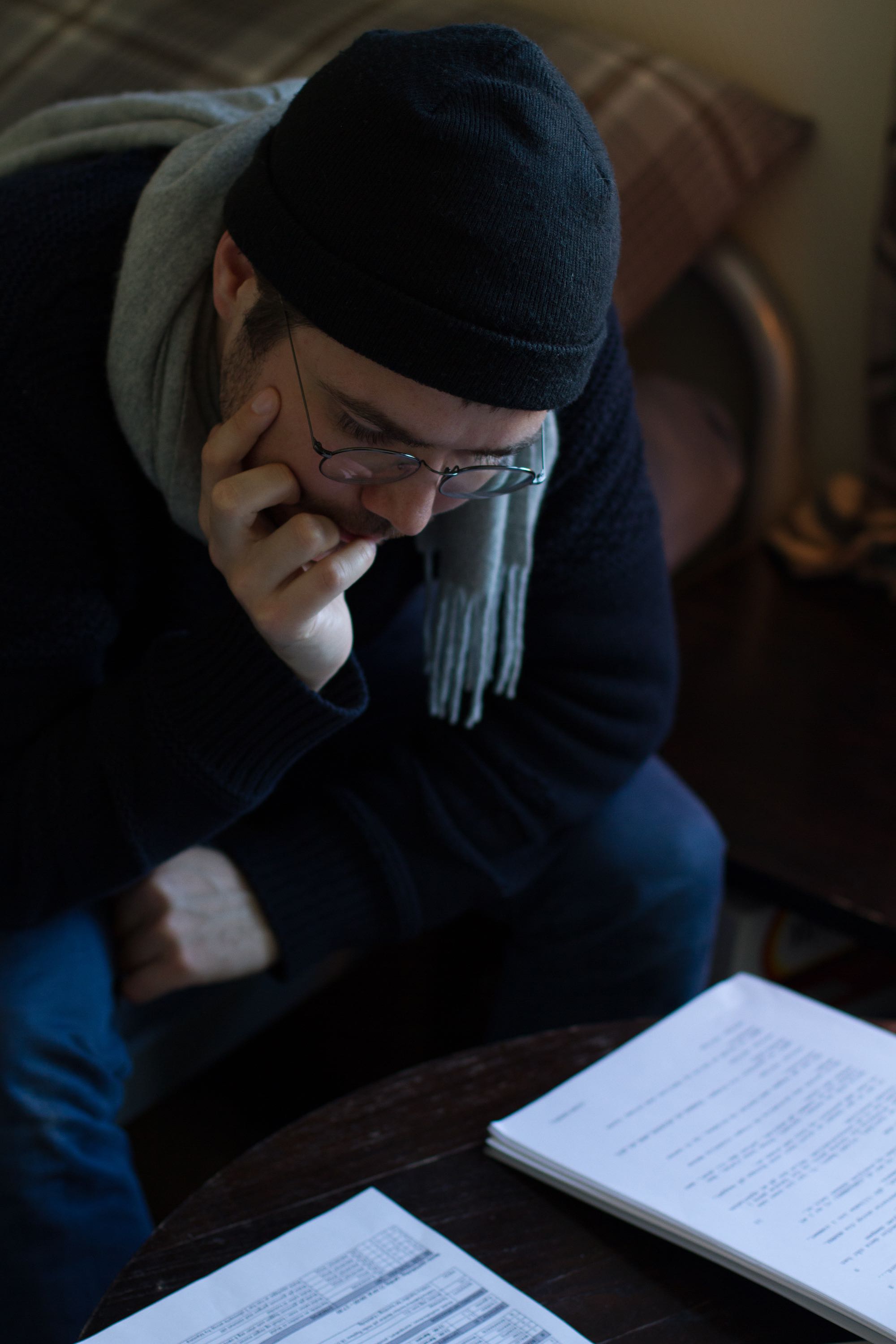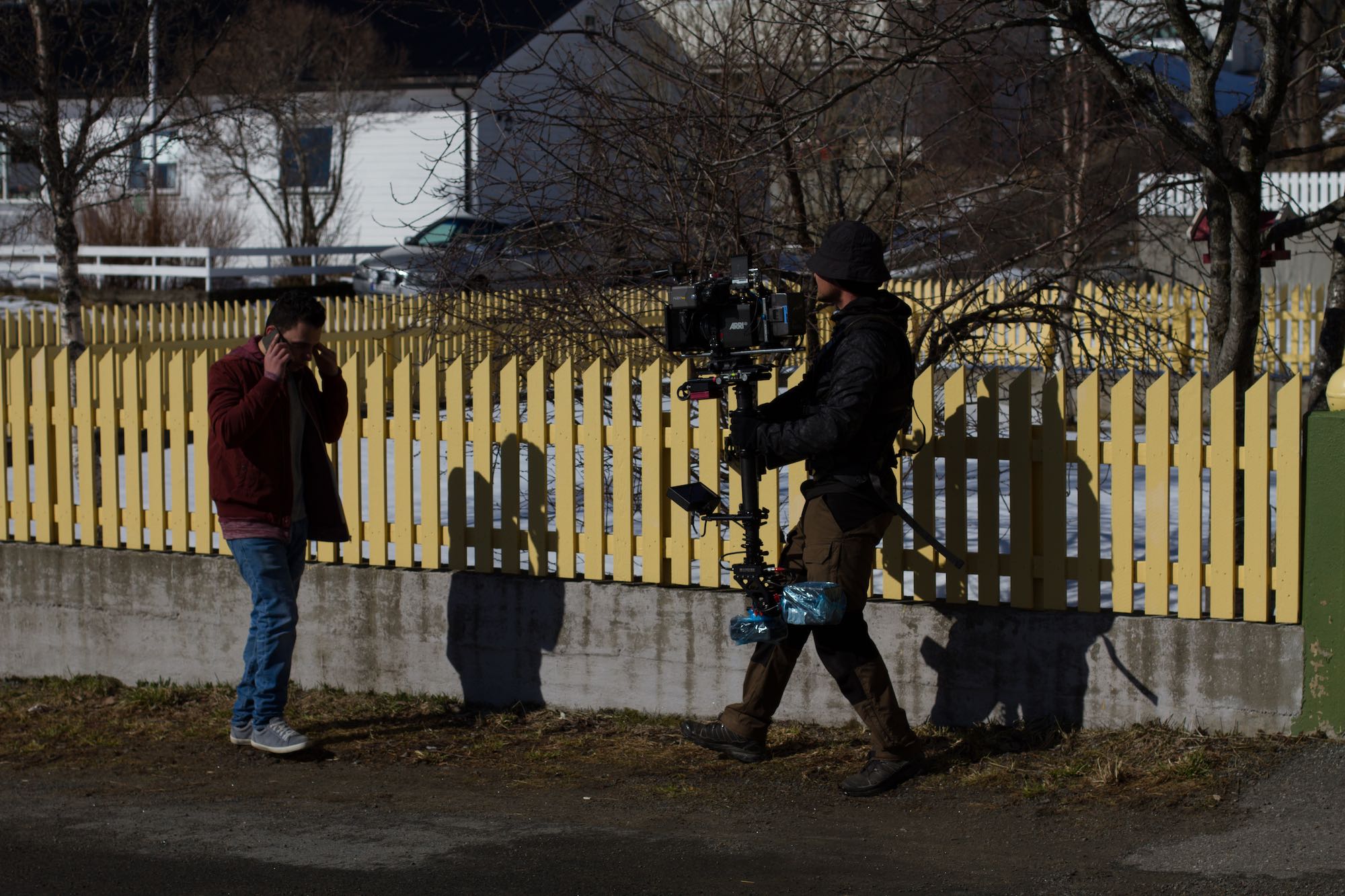
Filmmaker Truls Krane Meby, who we last spoke to four years ago for his tech-centric coming of age story World Wide Woven Bodies, returns to our pages with his latest short Mobile. It’s an arresting piece of filmmaking about a Syrian refugee in a Scandinavian village who communicates via phone with his family in an attempt to help them cross the border. Mobile displays incredibly pertinent issues (almost too much so, read on to find out why) and is impressively realised through the Norwegian director’s use of real locations and non-actors. Watch this remarkable film below after which Meby opens up about his process and how, through detailed workshopping, he was able to coordinate a swift and effective production.
Mobile is based on a true story, so the first spark came from hearing about the incident. A young Syrian refugee had helped his fleeing family cross from one country to the next over his mobile phone from my hometown of Svolvær in Norway. It immediately sounded to me like the incident had the potential to become a film that could encapsulate many elements of the refugee experience both in a direct and very human way. The mobile phone aspect interested me, as I’ve dealt with our relationship to technology in previous films. I thought it could become an emotional film about our current times. In fact, the story was so contemporary that by the time we’d shot it, it was placed firmly in the past, as the specific route the family travels in the film was locked down by then.
The biggest challenge was getting under the skin of an experience so far removed from my own and in a language I don’t speak. I did my best to try to understand the story through all the wonderful Syrian collaborators on the film that shared their own experiences with me. Our fantastic lead actor Jawad Alkadhmani, his brother Aihm who plays the brother, Gaith Jacoub who cast the voices of the smugglers, Eman Kamal Aldeen who plays the mother, our on-set translator Wessam Hachicho, and the extras in the language class who shared their stories.
The biggest challenge was getting under the skin of an experience so far removed from my own and in a language I don’t speak.
Jawad had never acted before but had an immense presence in front of the camera. To get to know each other and prepare, we got to hang out and workshop the film together in the week before shooting, just the two of us. We ended up making the whole film, which I edited in time for the proper shoot, so it not only worked as preparation for me and Jawad but also really came in handy when it came to preparing the shots.
We used the Alexa Mini and Cooke Speed Panchro lenses and were on a Steadicam for much of the last half of the film. The film we created in the workshop ended up being a very precise guide for that in particular. So, the beats, the energy and flow of the camera, the overall feel of the music and the way the intensity of emotion should grow, and not least how our ironic ‘postcard’ aesthetics would work. I had the idea to have these ‘postcard’ scenes that would surreally juxtapose this northern Norwegian village with the names of other places in a classic postcard aesthetic, as a way of getting under the skin of this bizarre situation where our main character feels like he’s everywhere at the same time as he’s completely stuck and alone at ‘the edge of the world’, juxtaposing the idyll of his surroundings with his terrible situation. I wanted the postcards to constantly interrupt Whalid’s energy and flow, but wasn’t sure how that would work. Through the dummy version I gained confidence that it would.
The film we created in the workshop ended up being a very precise guide.
The first part of the film called for so many different places and other characters that the dummy version was only the roughest guide to it, and didn’t really help with the staging. When we shot the opening scene we went into a classroom situation with only the barest of concepts, shooting it as a documentary with a few loose ideas about moments, but also being very open to what would happen on the spot. The use of the map was completely improvised and fit perfectly into the thematic threads of the film, so much that it quickly became an obvious way to open the film.





From the initial idea it took about a year to write and find funding. The writing went relatively quick for me and then we held out production until we were fully funded by the Northern Norwegian Film Center, The Norwegian Film Institute, and The Cultural Business Development Foundation of SpareBank1 Nord-Norge. Then we shot for four days and edited on-off for a few months. First I did a pass, then I edited for a week with Trude Lirhus, then I did a final pass again some months later. I like to spread out the editing and not have it in one short intense period, I need to live with it for a while. So, by the time we had our premiere it was almost exactly two years after the initial inspiration came.
I’ve just finished the penultimate round of shooting on my first feature Dyr & Dyr, very much still a working title, that I’ve been shooting on and off since last June. It’s another project that thematises our digitally interconnected lives and tries to get under the skin of a girl with apocalyptic nightmares who feels guilty for not changing herself and working more against all our current impending dooms. It’s about trying to be a better person, but having some trouble seeing that through.


